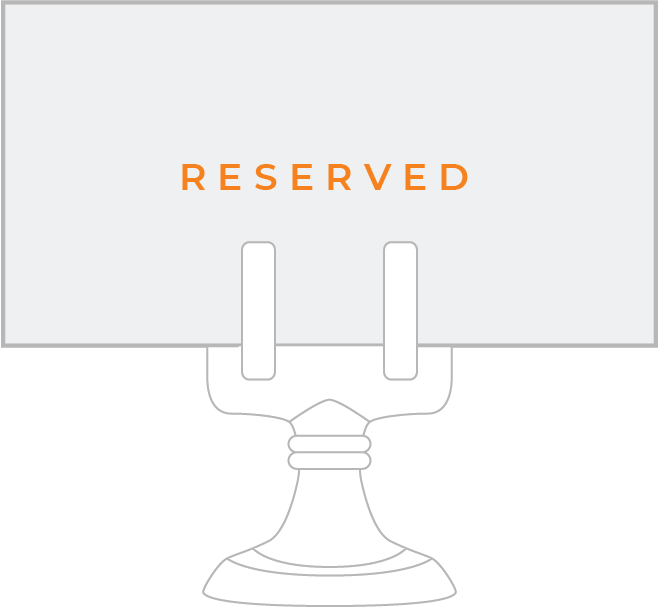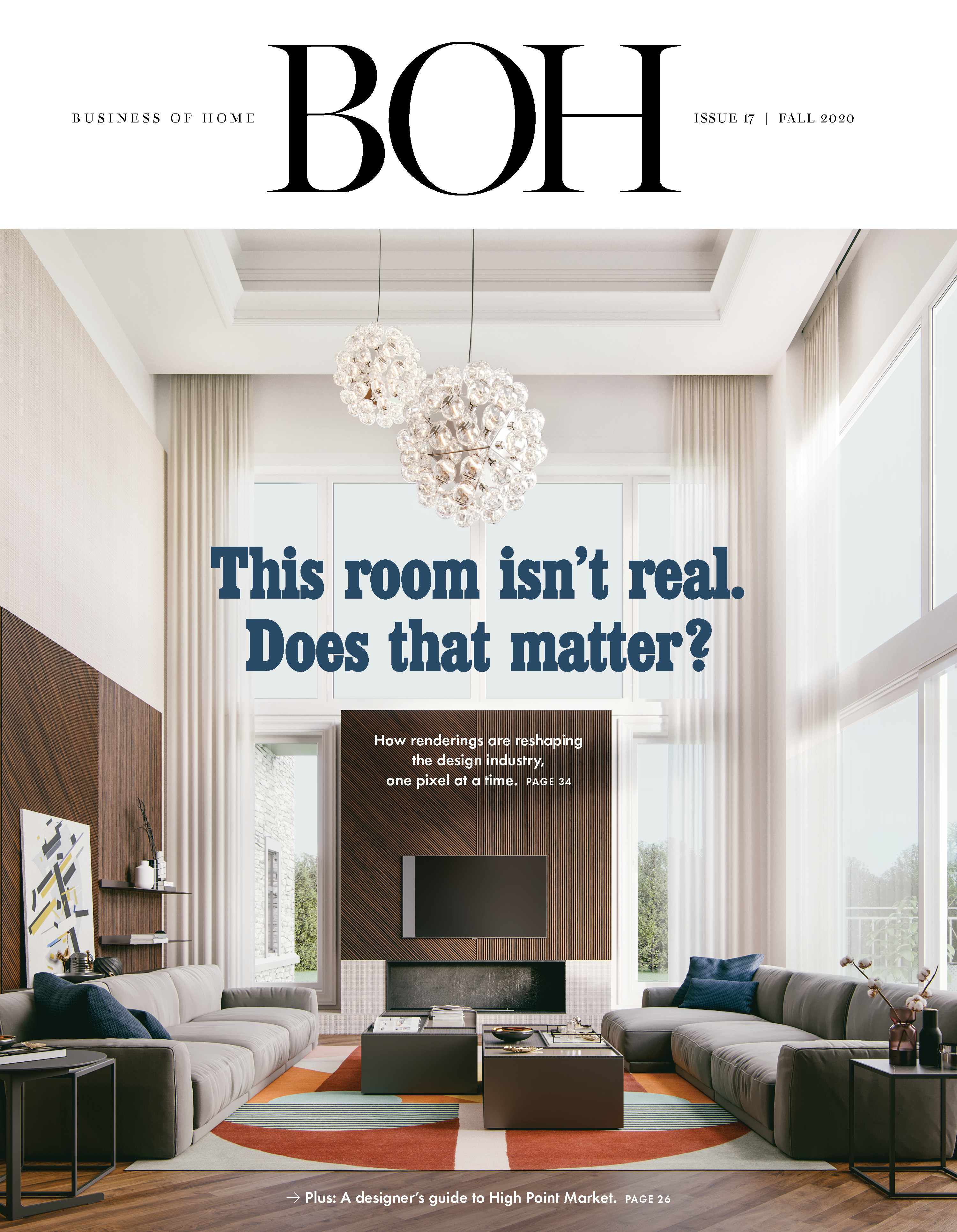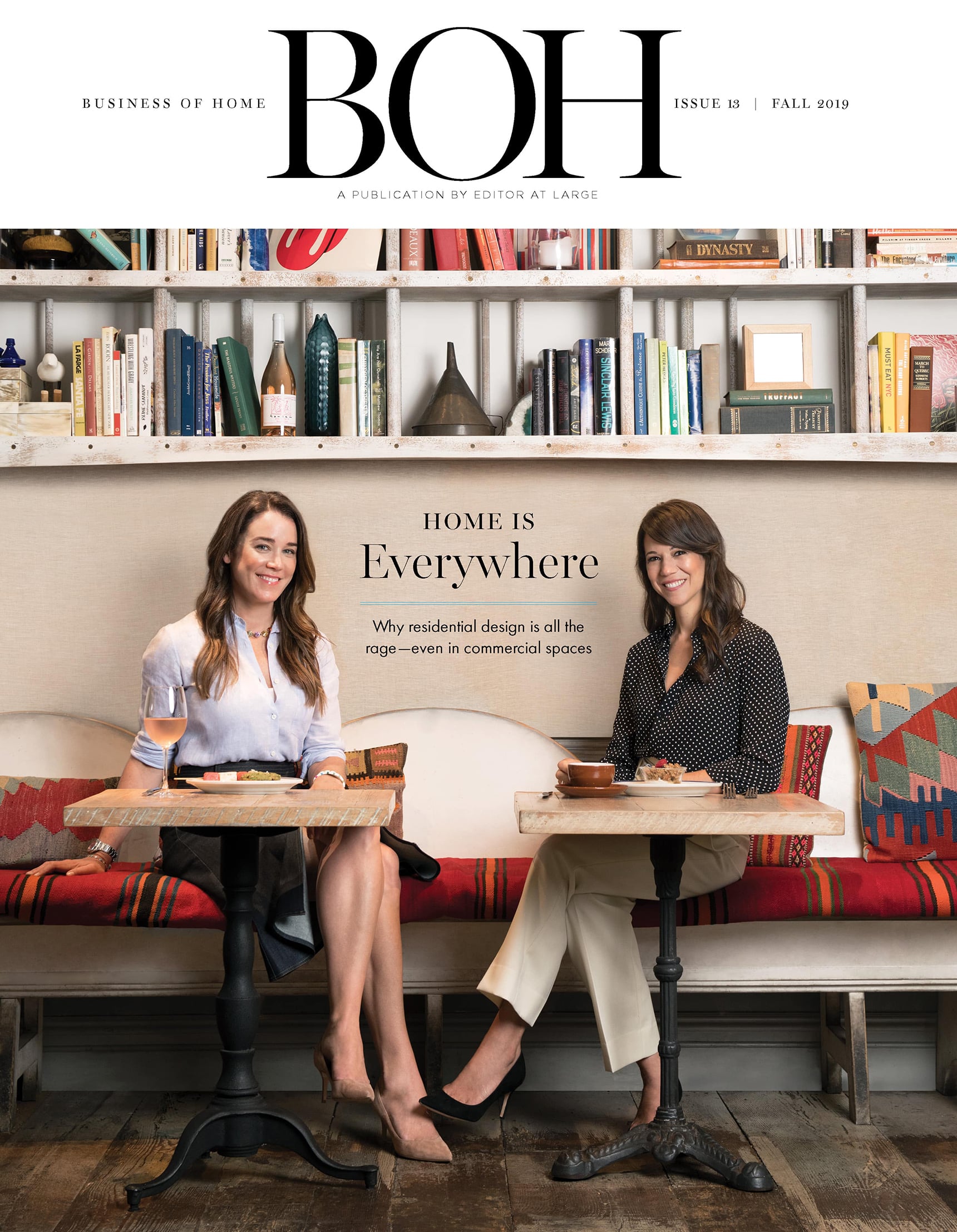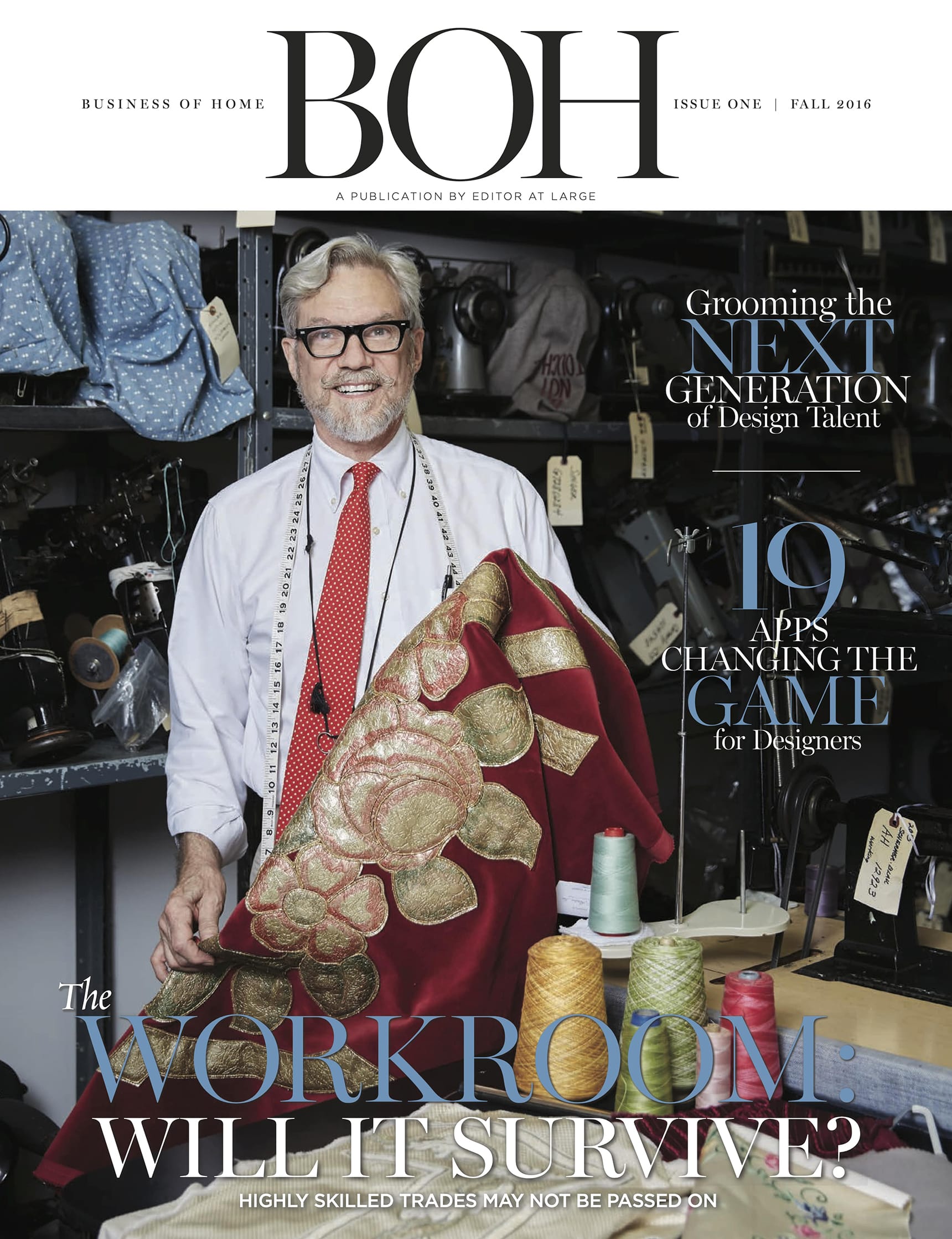As showroom foot traffic declines, fabric businesses are increasingly turning to a sophisticated network of outside sales representatives to reach designers at their desks.
“All of the costs have gone up, but the number of visitors has gone down,” says Andrea Rubelli, CEO of Donghia and an executive at the Rubelli Group, a fifth-generation Italian textiles business. There’s no hand-wringing about it, just a simple acknowledgment of the facts: “You can’t have huge, American-sized showrooms [in design centers] anymore, because there aren’t enough people who walk in every day to cover the rent and the cost of the salespeople. The profitability of most showrooms is going to be negative soon. It’s happening, and it’s happening very fast.”
Designers’ shopping habits are changing, says Nina Butkin, vice president of design at Fabricut. “It used to be that designers would come into the showroom and spend hours there. The person working in the showroom would help them, guide them, educate them. That is still happening, but not necessarily face-to-face. Interior designers and the consumers they serve have much more access to everything on the internet. Designers go online, then call the showroom and ask, ‘Can you order me a sample of this?’ [It’s up to the] showroom salesperson to say, ‘That’s great, but are you familiar with this product too? It’s similar and may be interesting [to you].’ There’s still a lot of work with customers going on, but we’re all trying to adjust.”
That doesn’t mean the showroom model is necessarily on the ropes. Though Fabricut is constantly expanding its outside sales program in pursuit of new distribution channels, be they online or with new showroom partners, the company has maintained its existing showrooms and staff. Although Rubelli’s companies tested going without showrooms in a few markets, he found that the physical spaces play an important—albeit secondary—role. “There is still a large community of designers who need showrooms,” says Rubelli. “It’s not enough business to support the showroom, but big enough to be important.” Ten years ago, 70 percent of Rubelli’s business in the United States came from showroom sales and 30 percent came from outside reps; today, it is the reverse. “You can no longer count on a showroom to make the sale, with outside reps to get something additional. Now, the outside reps chase business where the business is,” he says. His companies have spent the past year investing heavily in talent, both in their showrooms and out. “The showroom today is a service point more than a sales point.”

BOH subscribers and BOH Insiders.









































